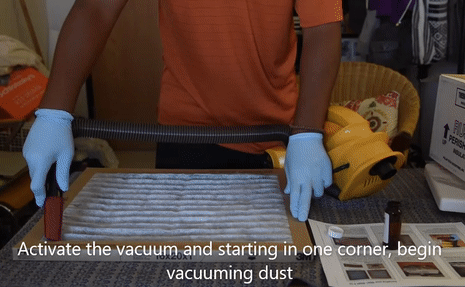Our team studied the distribution of SARS-CoV-2 #RNA signal in a quarantine home with 2 #COVID19+ occupants. Viral transmissions can occur in homes where most people quarantine while recovering. Here our pre-print ( https://www.medrxiv.org/content/10.1101/2020.11.30.20234393v1). This  breaks down our findings
breaks down our findings
 breaks down our findings
breaks down our findings
The samples in this study were taken a month after symptoms resolved. Samples were taken from surfaces (doorknobs, counters, ...) & dust from the floor & #HVAC filter, and measured for the virus via #RTqPCR (technique that amplifies a part of the virus genetic code).
More than 45% of the samples from the home were positive for the viral signal, mainly those not cleaned or cleaned with water. Those cleaned with home #cleaners containing more stringent chemical agents were mostly neg. We measured is RNA signal, which does not imply a live virus
For samples where area could be assessed, we provide concentrations of viral copies per cm2, which could be useful for cross-study comparisons. Whereas we found viral signal in carpeted floors, vinyl flooring -cleaned with disinfectant- were negative.
It's relevant that many surfaces had a detectable RNA signal a month after the symptoms resolved — even if infectivity is not known. This should be considered in studies looking at viral distributions in environments since residual viral signals may be detectable for some time.
The consensus seems to be that surfaces are not likely the main source of #transmission and almost certainly aren’t important after this long time period, so no need to panic just because of a virus signal.
We also measured the concentration of viral copies per gram of dust in samples taken from the floor and from the HVAC filter. This study provides a first point of comparison for future studies.
The viral concentrations on the floor represented the highest obtained in the study, followed by those in the HVAC filter. This emphasises the importance of frequent cleaning of the floors using disinfectants when that is an option.
The filter was low efficiency #MERV 4 which is capable of removing many large particles. The RNA recovered from the filter thus either likely came from large respiratory droplets transported longer distances indoors &/or from large particles/dust likely resuspended from the floor
Through many air filtration passes (AC runs a lot to keep comfortable temperature indoors in #TX), this low efficiency filter was able to capture particles that included the viral RNA and even a more efficient filter (higher MERV) would likely have captured more.
Following the Quantitative #FilterForensics ( #QFF) approach by @IAQinGWN, we estimated that during the filter collection time, the average airborne viral concentration was ~90 viral copies/m3. This estimate also provides a first point of comparison for future studies.
Because HVAC filter dust represents a pooled sample, contributed to by all occupants in a building over an extended period of time, repeated monitoring could be used to identify spikes in viral concentrations in the dust.
This information could be used for implementing measures in buildings aiming at containing or reducing sources and transmissions.
If you’re interested in learning more about this study, reach out to us @IAQinGWN, @yeipijotape with questions or suggestions!
If you’re interested in learning more about this study, reach out to us @IAQinGWN, @yeipijotape with questions or suggestions!
Some calls: @CorsIAQ @CathNoakes @linseymarr @j_g_allen @polsiewski @davidacoil @watermicrobe @javisalas @Mariano_Zafra @Poppendieck @mattlargey @UTAustin_WCWH @CockrellSchool @shawnahenders19 @Read4Ks @etgall @MisztalPawel @gilbertjacka @NoonanJack
In the next couple of days, the spanish version will be posted. Thanks for the interest.

 Read on Twitter
Read on Twitter


